So that led to a second and third try, and then one while at the Cam Trap Codger's most excellent workshop near Yuba Pass, and again in the Sierra by Mariposa, and, just this last week, a first foray down on the Chimineas Ranch.
And I'm going to continue this homebrew science project.
Because the catch varies by place, season, temperature, time, and moon phase, so I'm sure I haven't seen even a fraction of the flittering fun yet.
Not that I've identified 1/2 the crawlies I have seen. But, since there's about 30,000 species of invertebrates in California, and near 300 of moths, I can hopefully be forgiven - for now.
Btw - making a bugsheet - or "light sheet" as the pros call it - is pretty easy. You really just need some sort of white/reflecting surface and a lamp/light to point at it. Ideally the illuminated surface is open to the night sky, so critters flying overhead will see it and drop in.
"Is that the moon down there? Let's go see..."
White-painted exterior walls and garage doors can work well, but I've found that a simple white bed sheet gives the most flexibility. With just some cord and a few clothespins, I can put it up anywhere, at any angle.
For the bulb you can use an incandescent, but a UV black light attracts more insects. Supposedly sodium bulbs attract the most, but I think they burn a bit hot and require a special base, so I use a fluorescent black light bulb and shop clamp-light that I bought at Home Depot:

For the price of a movie ticket, a buglight gives endless hours of invert cinema,
and makes a terrific science project to do with your kids (for fun or school)
And so far, it's worked like a charm - literally. I've gotten moths, beetles, wasps, ants, flies, spiders, crickets... Or, in the geek-vernac of Entomologist-types: lepidops, coleops, hymenops, dipterids, arachnids, orthops... A veritable pot-pourri of fluttering & creeping critters.
So on to this year's takes...
To start, here's 2 of California's largest moths - both seen this spring in the Sierra Nevada:

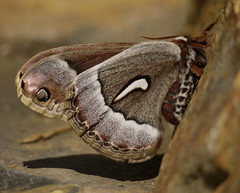

Ceanothus Silk Moth, Hyalophora euryalis (larva on shrubs). Wing span is ~ 6 inches (15cm). And yes, these fuzzy cuties do pre-date Nike (company and goddess).


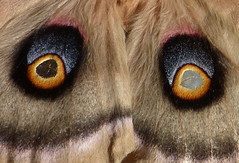
Polyphemus Moth, Antheraea polyphemus (larva on broadleaf trees ala black oaks). Wing span is also ~ 6 inches (15cm). Those eye spots are transparent...
A few more sizables from near Mariposa:
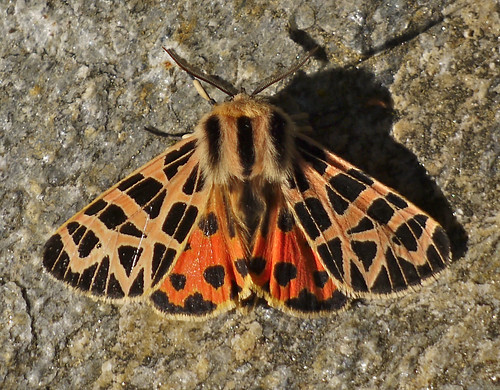
Ornate Tiger Moth, Grammia ornata.

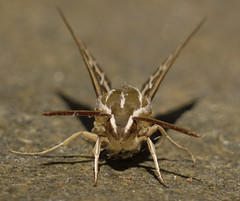
White-lined Sphinx Moth, Hyles lineata.

Lappet Moth - maybe Phyllodesma americana.
And the smaller moth's mugshots, most of which I have no ID on yet:
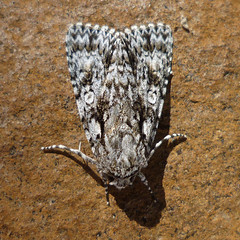

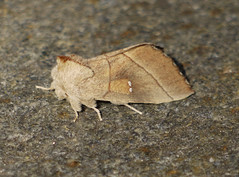
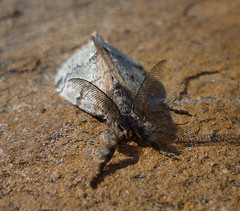
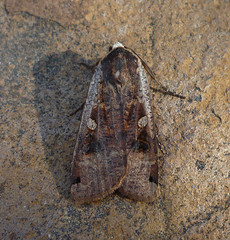

This cool character is an Edward's Glassywing, Hemihyalea edwardsii (larva on oaks). It flares its wings and shows red to scare off potential predators (that might think it poisonous):
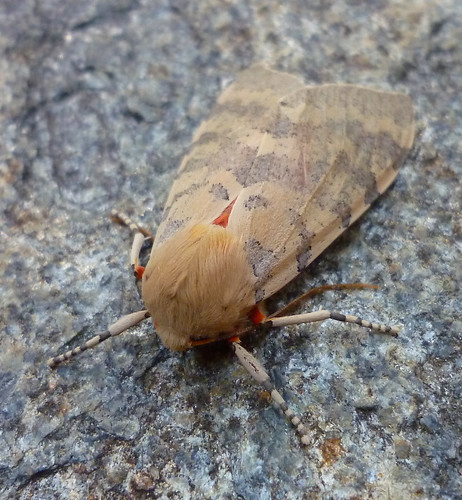

Edward's Glassywing in defensive pose.
Also scored this big Neuropterid:
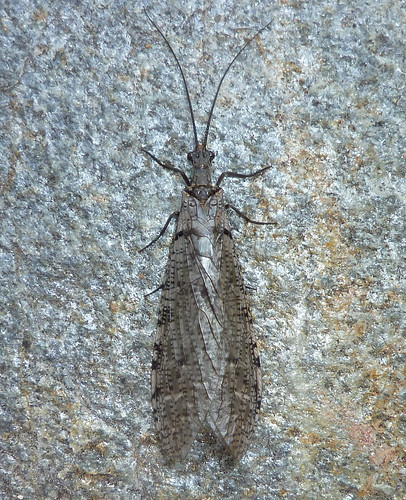
A Gray Fishfly, of the family Corydalidae - maybe Neohermes californica.
If possible, I catch the interesting insects and hold them til morning for some good natural light photography. But, I've found that even w/o a fancy macro-flash setup, I can get OK pics at night with the bugs on the sheet. Just hold a flashlight on the insect to allow the camera to focus-lock, then pull the flashlight away and finish pressing the shutter. If your camera allows you to reduce the flash intensity, you might play with that - I cut mine to -2/3.
Here's a bunch of the visitors we saw at the Codge's cam trap workshop in the Tahoe National Forest of Northern Cal. Being near the river, we attracted quite the variety...
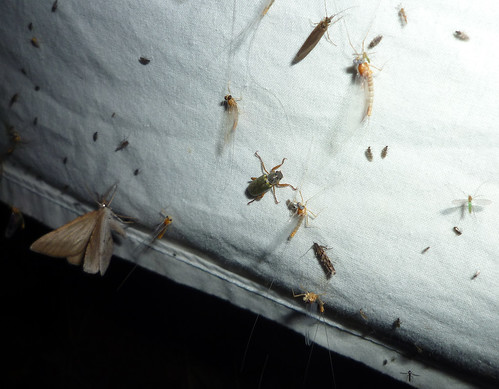
Bug density & variety on light sheet when we hung it this summer near the Yuba River
And some of the colorful characters:

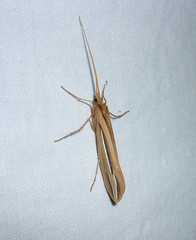
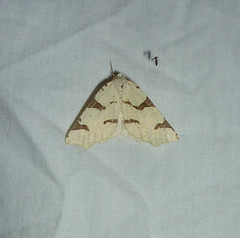


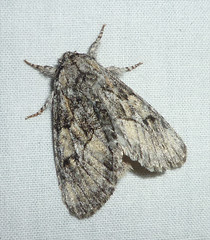

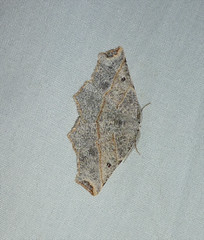


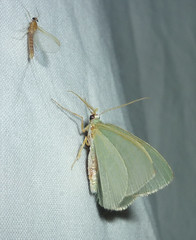
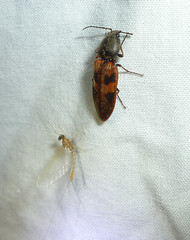
This guy won the night though - a borer beetle, of the family Cerambycidae - the Longhorned Borer, Ortholeptura valida. Looked like carved, stained and polished wood:
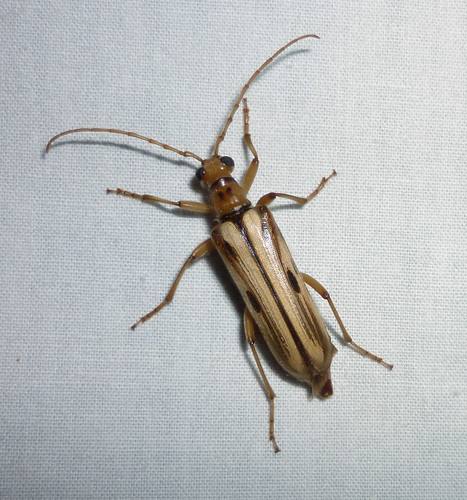
We'll finish with a the end-of-summer visitors from this past week's visit down Chimineas way, in Central California - a place that I'm definitely looking forward to hitting more.
Here's the sheet setup we used at the Chimineas Ranch:
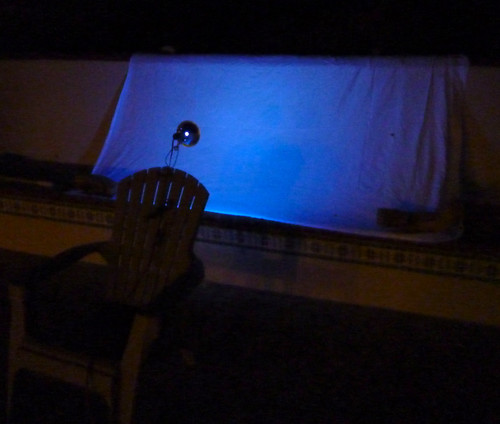
And some of the interesting inverts we saw in 2 nights:
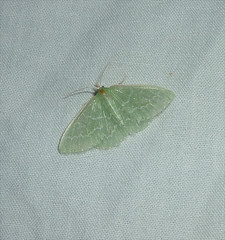

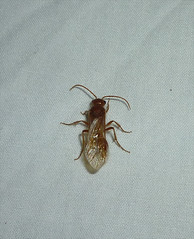

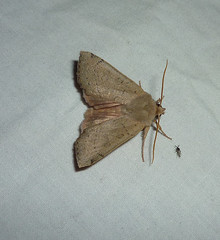
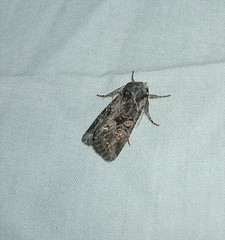
This pretty was hiding under the sheet when I pulled it up the last morning:
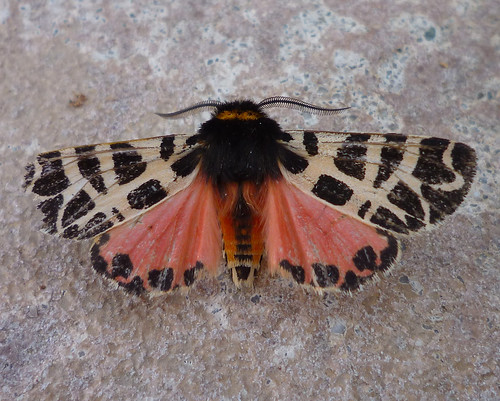
Tiger Moth, Grammia behrii.
These cuties also came to the light, and sat staring at it from the edge of the area, as if the UV lamp was center stage at an amphitheater. Maybe they too came for the moth show?
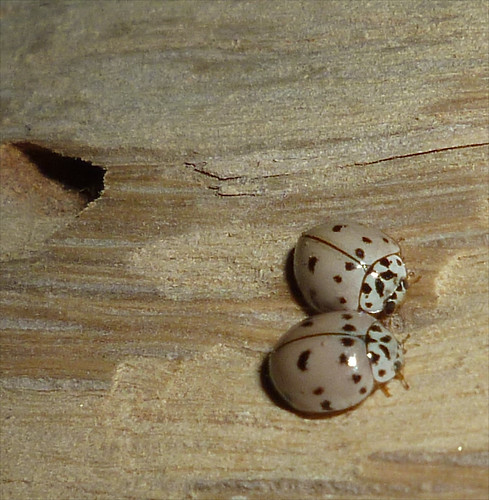
Ashy Gray Lady Beetles, Olla v-nigrum.
==
References:
- BunyipCo - Tiger Moths (on Light Sheet)
- BunyipCo - A Few Interesting Beetles (on Light Sheet)
- The Marvelous in Nature
- John Muir Laws - The Laws Field Guide to the Sierra Nevada
- Jerry A. Powell and Charles L. Hogue - California Insects

Great selection of moths!
ReplyDeleteMan that is so incredibly cool. I can't wait to play around with this.
ReplyDeleteBeautiful!!! I just got pix of a Sphinx Moth today in Texas! LOVE your photos!
ReplyDeleteIf you want to reach invertebrate heaven, especially for moths, go to Mindo, Ecuador. What you will see there is beyond description.
ReplyDeleteMindo is also an amazing herp destination. A friend of mine has gotten some great shots from there as he goes most every year now.
ReplyDeleteGreat post Kenny. Love the Glassywing shot.
Thanks all!
ReplyDeleteLove to see someone else discovering moths! And, you take some great photos of them too. One quick ID note, your Apentesis proxima is actually Grammia behrii - a much rarer moth!
ReplyDeleteActually your taxonomy is a wee bit out of date in general (I see from Powell's old book). Great book, but you should get his new one out on bookshelves in 2009! In the meantime, explore the Moth Photographers Group: http://mothphotographersgroup.msstate.edu
I'd post more links, but would probably get flagged as spam - but I have a handful of resources on my own blog.
Happy blogging, and look forward to seeing more moths!
Those lady beetles are great! I'd never seen that variety before these images. Really an inspiring post, I'm off to home depot for some supplies to run that expiriment here :).
ReplyDeleteThe joys of blacklighting!
ReplyDeleteI believe the longhorned beetle is Ortholeptura valida.
Thanks much Chris for the moth IDs and pointers.
ReplyDeleteThanks Ted for the confirmation on O valida - that's what we were thinking it was.
I had a Ceanothus Silk Moth perch itself on our lamppost this morning! Thanks to my friend she researched what it was and gave me your blog. It is by far the biggest moth I have ever seen. It is bigger than some of my hummingbird friends I have flying around here. A magnificent creature!
ReplyDelete